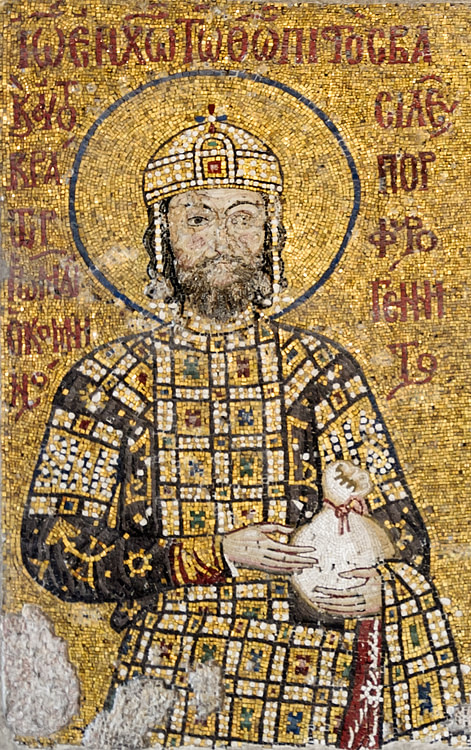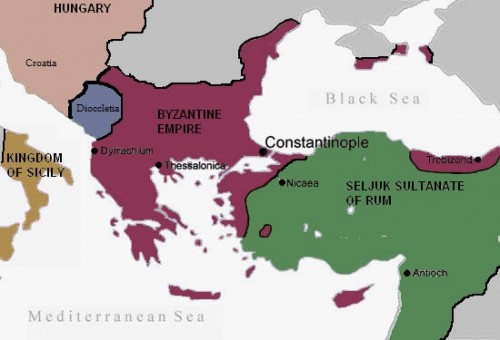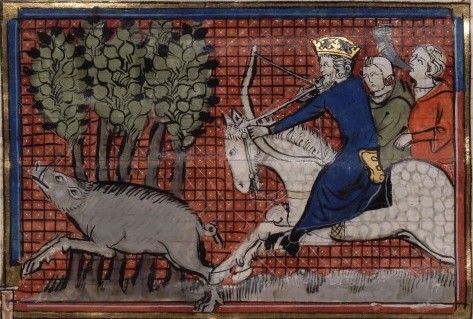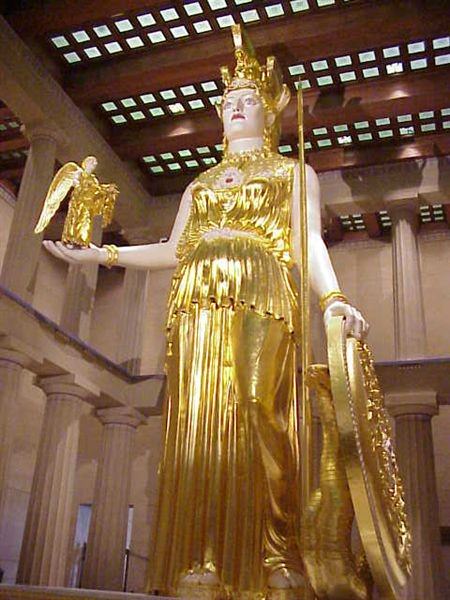John II Komnenos › Phidias » Ancient origins
Articles and Definitions › Contents
- John II Komnenos › Who Was
- Phidias › Who Was
Ancient civilizations › Historical and archaeological sites
John II Komnenos › Who Was
Definition and Origins

John II Komnenos “the Handsome” was emperor of the Byzantine Empire from 1118 CE to 1143 CE. John, almost constantly on campaign throughout his reign, would continue the military successes of his father Alexios I with significant victories in the Balkans, Armenia, and Asia Minor. The Byzantine Empire, thus, regained something of its former sparkle and the respect of its rivals across the Mediterranean.
SUCCESSION
John was born in 1087 CE, the son of emperor Alexios I Komnenos (r. 1081-1118 CE) and Irene Doukaina. When Alexios died of disease on 15 August 1118 CE, John, his chosen heir, became emperor as John II Komnenos. All very straightforward but things could have been very different. This is because it was actually Alexios' eldest daughter, Anna Komnene, who was for a time Alexios' official heir following her marriage to Constantine Doukas, the son of Michael VII (r. 1071-1078 CE). When John was born, he, naturally, became the chosen heir. However, when Constantine Doukas died an early death, Anna then married the gifted general Nikephoros Bryennios the Younger and plotted with her grandmother, Anna Dalassena, to make her new husband the next emperor. The plan failed largely because Nikephoros remained loyal to the official heir John.
SECURING THE THRONE
John's nickname of "the handsome" and his general character is explained as follows by the historian JJ Norwich:
Even his admirers admitted that he was physically ill-favoured, with hair and complexion so dark that he was known as 'the Moor'. He had, however, another nickname too: Kaloiannis, 'John the Beautiful'. This was not intended ironically; it referred not to his body, but to his soul. Levity he hated: luxury he frowned upon. Today most of us would find him an insufferable companion; in twelfth-century Byzantium he was loved. First of all he was no hypocrite. He was genuine, his integrity complete. Second, there was a gentle, merciful side to his nature that in his day was rare indeed. He was generous, too: no Emperor ever dispensed charity with a more lavish hand. (266-7)
One of the first acts of John's reign was, understandably, to banish his scheming sister Anna to a monastery, but at least this allowed her to write her celebrated Alexiad history of Byzantium in peace. John was indeed lenient with the other conspirators and their ring-leader Bryennios was even kept in service in the palace when, under most other emperors, he would have been blinded or executed. To ensure no future rivals conspired to oust him from his rightful position, John created an entourage of advisors and generals largely picked from outside the court. The supreme example of this policy was the selection of the emperor's childhood friend, a Turkish former slave called John Axoukh, for the position of megas domestikos or supreme commander of the army. One of Axoukh's many duties was to weed out any potential opposition to the emperor at court, especially as he was so often absent on his campaigns abroad.
John married Irene, the daughter of King Ladislaus I of Hungary (r. 1077-1095 CE), and the pair is realistically depicted in a mosaic panel in the south gallery of the Hagia Sophia, Istanbul. The mosaic dates to 1122 CE and shows the royal pair offering gifts to the Virgin and young Christ.

The Byzantine Empire c. 1090 CE
THE STATE OF THE EMPIRE
John inherited an empire in reasonable shape thanks to the stability of his father's long reign (by Byzantine standards) and Alexios' undoubted abilities as a general. The empire had resisted attacks from the Normans, and the 1108 CE Treaty of Devol promised no further hostilities between the two peoples. As a bonus, Alexios had gained a valuable ally in the Venetians in the process, although the price was reduced tax duties for the Italian merchants. The 1091 CE battle of Mount Lebounion had finally seen off the troublesome Pechenegs of the Eurasian steppe. Finally, the First Crusaders began to arrive in Constantinople from 1097 CE, and Alexios put them to good use by expanding the Byzantine military presence in Asia Minor and creating useful buffer fortresses against the ever-more ambitious Arabs. The Crusaders might have gone a little awry and captured such jewels as Antioch for themselves but at least they had been distracted from Constantinople.
MILITARY CAMPAIGNS
John's military escapades continued where his father left off and the resurgent Pechenegs (Patzinaks) were once again defeated in the Balkans in 1122 CE. John had tricked the leaders by offering them gifts while his army attacked theirs. By no means a pushover, the battle was won thanks to the elite Varangian Guard, a mercenary corps of fearsome Vikings.Elsewhere, the Hungarians, now ruled by Stephen II, were pushed back into their own territory and the status quo restored, and, in 1129 CE, Serbia was obliged to accept Byzantine rule.
THE SUCCESSES KEPT COMING & IN 1137 CE THE RUBENIDS IN ARMENIA WERE CONQUERED & THEIR CAPITAL AT ANAZARBOS OCCUPIED.
In 1126 CE the trade privileges of the Venetians were renewed, ensuring their continued naval support in Byzantine campaigns, but this was only after the emperor had removed the privileges and the Venetians had convincingly argued their case by attacking the coast of Asia Minor and several islands in the Aegean. In 1130 CE John campaigned in Asia Minor against the Danishmendids, the Emirs of Cappadocia. Following five expeditions there, John returned to Constantinople and celebrated a triumph in 1133 CE.
The successes kept coming and in 1137 CE the Rubenids in Armenia were conquered and their capital at Anazarbos occupied. Then, in 1138 CE, Antioch was attacked, the prized city having been in Crusader hands for the last 40 years. The current occupier, Raymond of Poitiers, was forced to swear loyalty and concede the city to Byzantine governance, although he actually went back on his promise to hand over the city. As the people of the city had revolted at the idea of returning to Byzantine authority, Raymond had actually had little choice in the matter.
In the west, as the Normans were expanding again in Italy and Sicily under the leader Roger II (r. 1130-54 CE), John made useful alliances in 1137 CE with the German emperor Lothar (r. 1125-37 CE) and then his successor Conrad III (r. 1138-52 CE). The alliance was strengthened in 1140 CE by the promise of marriage between John's younger son Manuel and Conrad's sister-in-law Sulzbach. Manuel had to wait five years and until he was emperor before the wedding finally took place. With the threat of Roger II diminished, John could look towards the east once more.
In 1138 CE John set off for a campaign against the Arabs in Syria, his army bolstered by a regiment of Knights Templar and a group led by Joscelin II of Courtenay, the Count of Edessa. The fortress city of Shaizar was selected as the first target and besieged. Before too much damage was done by John's siege engines, though, the Emir of Shaizar wisely offered submission and a large tribute. Once again, the emperor returned home triumphant.

John II Komnenos Hunting
In September 1142 CE John returned to the old chestnut of Antioch and marched into Asia Minor once again. Raymond, still basking in his title "Prince of Antioch", managed to stall for a time, and this necessitated the Byzantine army withdrawing for the winter. The city then gained an unexpected reprieve when the emperor died suddenly the following spring.
DEATH & SUCCESSORS
John's reign ended in a freak accident while the emperor was out hunting; falling on a poisoned arrow or perhaps contracting septicemia from the wound. He died on 8 April 1143 CE. John was succeeded by his younger son Manuel, now Manuel I Komnenos, who would enjoy an even longer reign, lasting until 1180 CE. Manuel had been the chosen heir after the unusual decision by John to pass over his elder son Isaac and following the unfortunate deaths of two other brothers from fever.Manuel turned out to be even more ambitious than his predecessors but ultimately came unstuck with a failed invasion of Italy and then a defeat at the hands of the Seljuks. The loss of Venetian support following the withdrawal of trade privileges and the continued threat of the Crusaders all added up to troubled times indeed for the Byzantine empire going into the 13th century CE when the unthinkable happened and Constantinople itself was sacked.
Phidias › Who Was
Definition and Origins

Phidias (also Pheidias) was, according to his contemporaries, the most renowned of all Greek sculptors. His greatest masterpieces were completed between 465 and 425 BCE. Unfortunately, except through copies, no example of his work has survived. Although little is known of his early life, he rose to prominence during the rule of the statesman, commander, and orator Pericles around 449 BCE in the Golden Age of Athens. Phidias is most famous for his three Athenian monuments to Athena, the virgin Greek goddess of wisdom and war, as well as the statue of Zeus at the Temple of Zeus in Olympia, one of the Seven Wonders of the Ancient World. Supposedly, his works were so inspiring that people believed he had witnessed the majesty of the gods and revealed it to mankind through his sculptures.
ATHENA IN ATHENS
Of his youth, the only facts known about Phidias are that he was the son of Charmides (not the statesman of the same name) and a student of the Athenian sculptors Hegias and Hageladas. When Pericles came to power around 461 BCE, he initiated an extensive building program and placed Phidias, a member of his inner circle, in charge of all artistic projects. The sculptor's most celebrated works included three monuments on the Acropolis to the goddess Athena: the 9 metre (30 ft) high bronze Athena Promachos, completed in 456 BCE and one of his earlier works; the bronze Lemnian Athena dedicated to the colonists of Lemnos; and lastly, for the Parthenon, the Athena Parthemos.
PHIDIAS WAS MADE RESPONSIBLE FOR THE REBUILDING OF THE PARTHENON.
According to modern research, the Athena Parthenos, begun in 447 BCE and dedicated in 438 BCE, was forty feet tall and draped in ivory with over a ton of gold. She was dressed in a tunic, carried an aegis (a type of shield) adorned with the head of Medusa, and helmet. In her right hand she held an image of Nike, the goddess of victory, and in her left she clutched a spear. The Parthenos stood behind a shallow pond filled with oil not only to provide a reflection of the statue but also to aid in keeping the statue's ivory from cracking in the dry Athenian heat.

Athena Parthenos
As a friend of Pericles, Phidias was made responsible as general manager and supervisor for the rebuilding of the Parthenon, although the late 1st century CE Greek historian Plutarch gives the majority of the credit to architects Callicrates and Ictinus.The Acropolis and old Parthenon had been destroyed during the Persian Wars. The new structure was meant to represent the courage of the Greeks in their subsequent triumph over the Persian invaders. Plutarch in his Greek Lives spoke of Phidias, his relationship with Pericles, and his Athena sculpture in a chapter on the Greek statesman. He wrote,
Phidias made the golden statue of the goddess, and his name can be found inscribed as its maker on the stele.He was in charge of almost everything and, as I have mentioned, was the general manager of all the craftsmen - a post he gained as a result of his friendship with Pericles. As well as making people jealous of Phidias, this proved to be another pretext for maligning Pericles … (157).
ZEUS AT OLYMPIA
While his monuments to Athena brought him fame, his greatest masterpiece was the statue at the temple of Zeus in Olympia.Taking eight years to complete, it was finished in 430 BCE. The Temple of Zeus was considered one of the Seven Wonders of the Ancient World. Seated on a throne, Zeus, like Athena, held the image of Nike in his right hand and a scepter in his left. The statue stood over 12.8 m (42 ft) high - larger even than the Athena Parthenos - and was composed of ivory and gold. Again, like so many of his other works, the temple and statue no longer exist, destroyed by fire and earthquakes. It fell into ruins and was eventually covered by a landslide and river silt.

Statue of Zeus, Olympia
DISGRACE & DEATH
Phidias's final years are a mystery. Pericles's enemies accused the sculptor of stealing not only gold but also ivory during the making of Athena Parthenos. According to some authors, while he was supposedly able to prove his innocence on that charge, he was also accused of impiety for his portraits of Pericles and himself on Athena's shield. Plutarch supported the idea that Phidias may have been guilty, although he states the “theft was not proven,”. The enemies of Pericles, though, remained adamant about the impiety, so Phidias was jailed and died in prison. Apparently, the sculptor's friendship with Pericles caused him to acquire “one group of enemies on his own account, simply because they were jealous of him…” (172). Plutarch added, “So Phidias was taken off to prison where he died of an illness, although according to some writers Pericles' enemies arranged for him to die of poisoning, in order to discredit Pericles.” (172).
The sculptor's presence in Olympia is attested by the discovery of his workshop and the completion of the colossal Zeus gives proof to the fact that he did not die in prison - he may have been exiled or, fearing for his life, fled to Olympia. While he may not have died in prison, many believe he may have been killed by the Eleans. Regarded as the greatest of the Athenian sculptors, it is unfortunate that his memory and craft are only remembered through copies and the testament of contemporary authors.However, he influenced countless artists not only in Greece but also in Rome.
LICENSE:
Article based on information obtained from these sources:with permission from the Website Ancient History Encyclopedia
Content is available under License Creative Commons: Attribution-NonCommercial-ShareAlike 3.0 Unported. CC-BY-NC-SA License